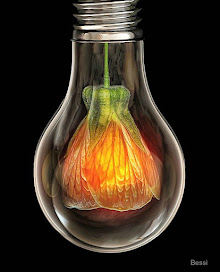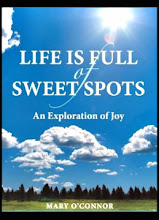 On an ordinary Friday I put my mailbox key into the lock and did what I do each time I open up the box; turn the key to the right, listen for an echo to see how much mail is inside, and remind myself to curse in French in case the electric bill has arrived and there are children nearby. Though my affection for Women’s Wear Daily has been on the wane of late, I still look forward to the fragrance coverage on Friday. The newspaper had dutifully arrived and looked like a carefully rolled scroll inside the mailbox. Cradled at its center was a distinctive white envelope addressed in neat and thoughtful script.
On an ordinary Friday I put my mailbox key into the lock and did what I do each time I open up the box; turn the key to the right, listen for an echo to see how much mail is inside, and remind myself to curse in French in case the electric bill has arrived and there are children nearby. Though my affection for Women’s Wear Daily has been on the wane of late, I still look forward to the fragrance coverage on Friday. The newspaper had dutifully arrived and looked like a carefully rolled scroll inside the mailbox. Cradled at its center was a distinctive white envelope addressed in neat and thoughtful script.I didn't recognize the sender's name or the address in Ardsley, New York. Ardsley has always fallen short on the gourmet scale. Its offerings include a handful of restaurants and The Riviera Bakehouse, the only pastry shop I know that can kill buttercream frosting (it tastes like cornstarch and aluminum). One of the oddest food stories I have ever heard originated in Ardsley. A man brought a bottle of French wine to a restaurant that was given to him as a gift. On his second glass he was eye to eye with a tiny frog that rested at its bottom. The French wine’s name included the word "frog", which had nothing to do with the amphibian inside the bottle and everything to do with why this story should have made its way into the pages of News of the Weird. Instead, the story ran in a local paper called The Rivertowns Enterprise and resulted in action by the FDA, who confiscated the bottle, the glass and the tiny frog.
I opened the envelope and pulled out a white note card with the words “Juergen W. Ausborn, July 27, 2008” embossed in capital letters. I recognized the font as it was the same one used at Pierre Marcolini in New York City, the chocolate store Juergen opened in 2005. Juergen was planning on opening a gelato store when I last spoke to him and I thought the note might have been a formal announcement. I wasn’t connecting the dots; “With a Passion for Food, Golf and Life…Juergen W. Ausborn died on Sunday, July 27th, 2008 in an accidental drowning in Bermuda. Upon his death, he is survived by his spouse Julia Collins, his daughter Jessica Ausborn and his dog, Chester. Juergen has requested that there be no memorial service, but asks that you raise a glass of wine in memory of the times you shared with each other.”
The elevator next to the mailboxes was on the ground floor and I ran inside to be alone. There was a familiar feeling in the pit of my stomach, the same one I had on September 11th when I was trying to make sense of the perfect blue sky and the aura of crematoria that snaked its way into the acrid odor of burning jet fuel, plastic, glass and steel. The haunting collision between life and death can stalk the grief-stricken like an inescapable loop dream. It felt unfair and cruel. How could someone who enjoyed life so much, someone who was kind and generous, be gone just like that? The last person I knew that died in a drowning accident was a physician and friend. "Think about the good things," I told myself. Grief was rummaging in my mind and I felt like I couldn’t breathe.
Juergen taught me a thing or two about food. I wouldn’t know a medlar from a melon if it wasn’t for him. When Pierre Marcolini's Medlar Jam premiered at the New York store, Juergen was quick to provide me with a jar and a few folkloric facts. He asked me if I wanted to taste a bit on brioche and I obliged. Anyone who has ever had to decide whether or not they should eat something always wants to understand what they are about to put in their mouth because eating is not only about sustenance; it is about the experience of nurturing body and mind through an understanding of the origins of food and the pleasures of taste. I was so moved by medlar that I spent a day researching the fruit and wrote a story about it. As testimony to the fruit’s compelling history (and Juergen’s joi de vive) the blog post on medlar continues to rank in the top ten requested stories on Glass Petal Smoke.
When I last saw Juergen, we were sitting at a table inside Pierre Marcolini discussing life and dessert. I finished a Tonka Bean Truffle and was admiring a Violet-infused Praline sitting before me on an elegant porcelain plate. Juergen handed me a jar of Confiture Fraîche de Fraise Mara des Bois, a strawberry jam made with petite wild strawberries that Pierre Marcolini had just released in the United States. Juergen seemed a bit nostalgic as he looked at the jar and began to tell me about his daughter Jessica, who loved wild strawberries as a little girl. She discovered them on a family trip to Europe and for the duration of the stay had an appetite for nothing else; "Strawberries for breakfast, strawberries for lunch and strawberries for dinner. That is all she wanted.” Juergen smiled and showed me pictures of his home in Ardsley and his dog, Chester. When he talked about Chester there was something very earnest in his eyes, the kind of warmth you see in a true dog lover. It was a side of Juergen I hadn’t seen before, but it didn't surprise me at all.
The scent of Juergen’s cologne highlighted our last conversation with a pleasant crisp earthiness. My nose couldn't stop honing in on one note; vetiver. Vetiver is an aromatic grass that is vibrant, woody and somewhat addictive (you want to keep smelling it over and over again). All of the tasting I was doing had dulled my sense of smell and I was certain that Juergen was sporting Vetiver by Guerlain. I asked him if that was what he was wearing and he laughed, shaking his head at the combination of curiosity and insistence in my tone. “It is Terre d’ Hermès,” he said. “A formula that includes a good dose of vetiver,” I replied. He smiled and coaxed me into describing the taste of the boutique's Violet-infused Praline to the woman who was selling chocolates behind the counter. She understood its beauty, but had a hard time articulating it to the uninitiated. I obliged and he handed me a bag with the strawberry jam and an extra goody; a bar of Fleur de Cacao. He held the door open as I left and told me to stay in touch regarding a gelato venture that was pending. I remember hearing the heavy glass door closing shut behind me.
It has taken a while to reconcile Juergen Ausborn's untimely passing and I have yet to return to the store. Writing this post seems to have removed some of the sting and I have been reminded by his wife Julia that there are gelatos waiting to be tasted. I'm sitting in front of the computer with a glass of Trimbach Gewürztraminer and the note that prompted this story. Zum Wohl, Juergen. May you find as much joy in the afterlife as you’ve inspired in those who knew you on this tiny blue planet.
A variety of Vetiver grass products are sold by VivaTerra. They include a bath mat, hamper and vetiver grass spheres that can be used for scenting.
The photo of a wild strawberry comes from the BBC website and was taken by Terry Ferdinand. The fruit is easy to grow in pots and in the garden.











